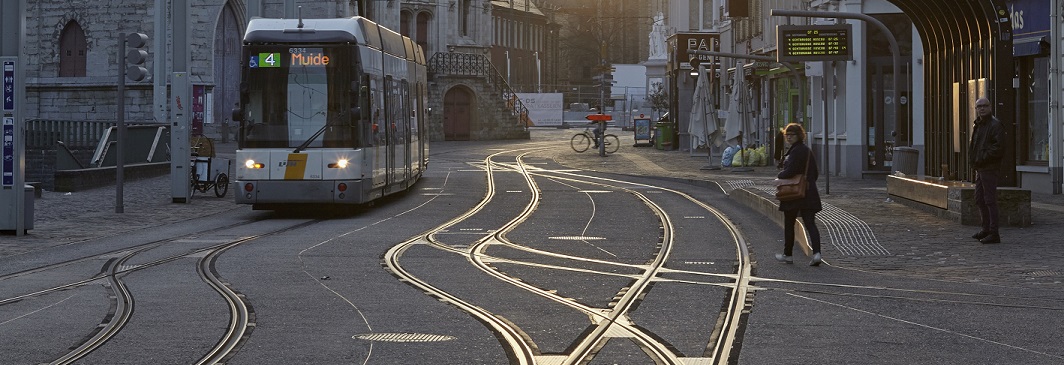Bus & rail
21st Century concrete slab track options bring:
- Reduced maintenance;
- Higher running speeds;
- Less worker exposure to risk;
- Increased space in tunnels;
- Safer, more reliable journeys;
- Less dead weight over viaducts and bridges;
- Systems use both precast and in-situ elements;
- Better sustainability compared to track ballasted systems.
Light rail and guided bus routes provide:
- Faster routes into city centres;
- Reduced traffic congestion;
- Less emissions;
- Encouragement for greater use of public transport.
Bus lanes
Travellers who use public transport systems demand quick, prompt and reliable connections as well as a comfortable journey.
Courtesy of Wim Kramer
Speed is one of the most important success factors of public transport. The high frequency of bus services and absence of delay caused by other traffic argues in favour of special bus lanes.
These demands for the traveller can be translated into the requirements for the road construction: durable, less or no maintenance, smooth surface (no wheel-tracks) and available in all weather conditions.
The design and execution of concrete road construction for bus lanes is not much different then for other types of concrete roads. With special software the construction can be designed,to take into account matters such as type of subsoil and foundation, frequency and intensity of axle loads etc.
Courtesy of Wim Kramer
Regarding the length of bus lanes the most common way to construct a bus lane is by a slipformpaver. The construction can be executed in non-reinforced concrete, but also in continuously reinforced concrete.
The surface finish also needs to meet the life-time requirements for roughness and evenness. For visual recognition of a bus lane, coloured concrete or exposed concrete surfaces can be used.
Benefits
- Easy access for elderly and disabled people, due to the same difference in height to get in or out of the bus at bus stops and bus stations.
- Less maintenance and replacements of bus tyres, due to the special designed curbs at bus stops.
- Bus lanes can also be used by taxis and emergency services (police, ambulance and fire-department).
Tramways
Description
Constructions for tramways can be divided into three main categories:
- Open lane constructions: These tramlane constructions are only used in longitudinal direction by rail traffic and not by any other kind of traffic.
- Closed lane constructions: are not only used in longitudinal direction by rail traffic but also by all kind of road traffic.
- Special lane constructions: are used by rail traffic and only in transverse direction by road traffic to cross over.
Advantages & limits
- Open lane constructions: These are usually constructed with rail on sleepers on a ballast bed or rail fixed in concrete slabs. The open lane construction on sleepers can be used in areas with fewer slumps. The open lane construction on concrete slabs can only be used in areas without any slump. The initial costs for concrete slabs are higher then for the construction on sleepers, but the maintenance costs are lower.
- The closed lane construction consists of a concrete slab with a paving construction. This paving can be executed with paving elements or a monolith construction. This choice determines to a large extent the aesthetics. When the tram lane is used by other (light) traffic, like taxis, a concrete monolith paving is preferred; for use by heavy traffic a concrete monolith paving is a must. This construction is very suitable in areas with no slump or less slump and have very limited maintenance costs.
- Special lane construction can be divided into constructions for crossings and stops and in constructions for tunnels, bridges etc. For crossings and stops concrete slabs or elements can be used in open lane constructions. For bridges and tunnels embedded rail is one of the best options.
Applications
Defining the best solution for tramways construction is of course depending from various elements: local situation, preferences of public transport companies and of local/regional government and other factors.
Solutions in similar technical conditions can be different because the responsibilities of the involved parties regarding initial investments, maintenance and exploitation will be different.


